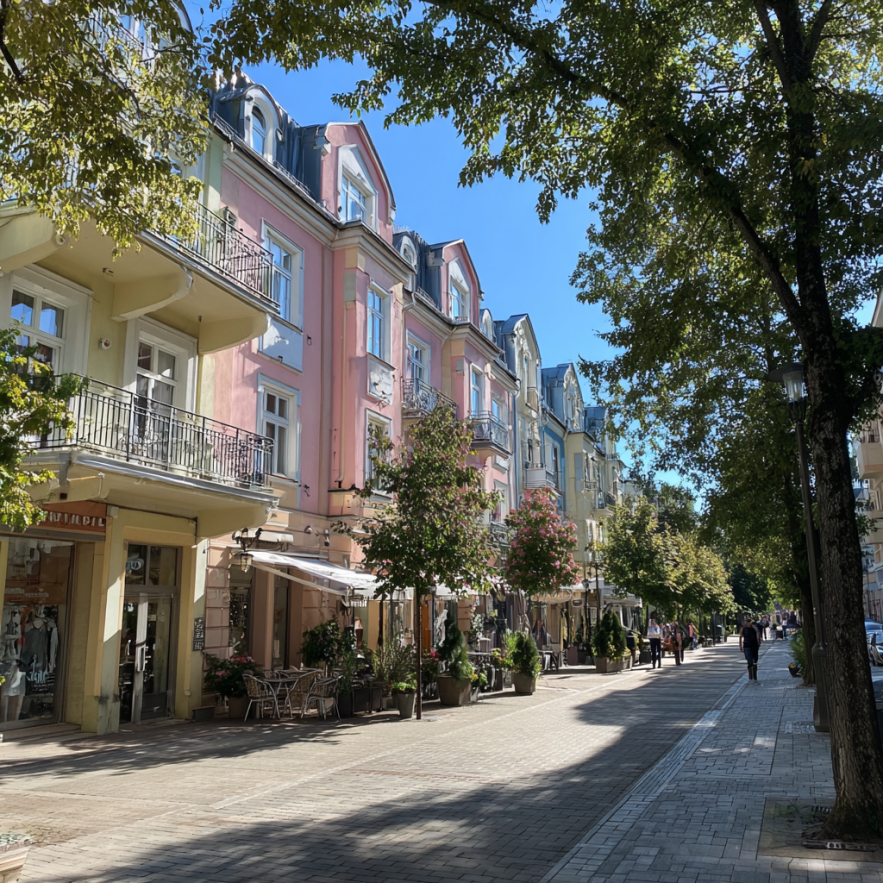Where just yesterday there were only standard high-rises, dull empty lots, and tired benches near entrances, today you can find small shops, cozy cafés, local bakeries, and flower kiosks. Retail has become not only a source of convenience but a living element of the urban environment—especially in residential districts. Well-planned retail can spark a chain of changes—from safety to local employment.
A store as a point of attraction: why neighborhoods need retail
For a long time, residential areas were seen as “just a place to sleep”—lacking infrastructure and cultural life. But the emergence of local retail is starting to change that perception. Even a small neighborhood shop can create a steady flow of people and literally “light up” a part of the street. As more urban residents work remotely, it’s increasingly important to have nearby services within walking distance.
Local retail not only sells products or services—it creates a social space. People meet more often, interact, and begin to feel that sense of “home turf.” This is particularly important for seniors, young parents, and students. The simple presence of a pharmacy, café, or hair salon on the ground floor of residential buildings significantly increases the comfort level and personal identification with the neighborhood.
For developers and investors, this is a signal: a quality retail format can increase housing appeal. That’s why many new residential projects now include retail spaces in the earliest planning stages. A store becomes not just an add-on service, but part of a complete ecosystem that encourages people to stay in the area.
Changing routes and habits: what happens when a store opens
Even a single retail outlet can change residents’ behavior. People rethink their usual routines—walk more, linger outside, explore nearby places. At the same time, street safety increases: when there’s pedestrian activity, crime tends to recede. This isn’t guesswork—it’s a well-documented effect of “active streets.”
Retail also changes urban navigation. Where a street used to be just a passthrough zone, it now becomes a destination. People meet near retail spots, pass them on the way to transit, or use them as landmarks. In this new context, even minor architectural features (benches, lights, awnings) function differently—they invite rather than repel.
Economic activity gets a boost too. A retail point creates jobs—not only for sales staff but for suppliers, drivers, and cleaners. Sometimes, small local clusters emerge: a bakery opens, then a flower shop, followed by a coffee bar. This adds to the district’s tax base and stimulates further improvements.
What kind of retail works in residential areas: real examples
In practice, small-format retail works best—bakeries, coffee spots, corner stores, small pharmacies. They require less investment but deliver quick impact. In Moscow, for example, “at-home” retail projects are thriving, combining a shop, seating area, and even a small kids’ corner in one location.
One compelling case comes from Kazan, where a new residential complex dedicated its ground floors to a mixed-use retail space. A tailor shop, ceramics studio, and farm market now operate side by side. This mix turned out not only popular but visually distinctive—a new identity marker for the neighborhood.
The key rule: don’t copy malls, but adapt to local habits. Near a school? A bookstore with games and stationery is a hit. Young demographic? Design-savvy cafés and quick bites. There’s no universal formula, but the closer the business model is to real people, the stronger the response.
- Best performance: retail spaces under 150 sq. meters
- Business models should offer at least 50% daily-use goods or services
- Proximity to other stores increases foot traffic by 30–40%
- A street-facing window display boosts sales by an average of 20%
Architecture and visual impact: it matters what the place looks like
In a residential area, retail should be not only functional but also visually appealing. The monotony of typical apartment blocks can be offset by interesting storefronts, warm lighting, and creative signage. Many developers now involve designers to work not only on façades but also on outdoor furniture, signage, and greenery.
It’s important to remember that the storefront’s appearance affects not only aesthetics but the perception of safety. Transparent glass, good lighting, and visible interiors help make a street feel safer. Even a modest shop can elevate a block when done with taste and in harmony with surrounding architecture.
A growing trend is integrating retail into public spaces. Shops inside libraries or cultural centers, cafés next to playgrounds, or bakeries in parks become places where different generations and interests naturally intersect. This lowers social barriers and adds diversity to everyday life in the neighborhood.
Why developers are now including retail at the planning stage
Developers have come to understand that retail is not a bonus—it’s essential. Without accessible retail, housing becomes less attractive—especially for families and elderly residents. In fact, ground-floor retail not only helps sell apartments but also stabilizes the neighborhood long term.
From an investment perspective, commercial real estate on the ground level allows developers to recoup part of their costs more quickly. Often, lease-to-own models are used, giving small businesses a chance to grow without huge upfront investments.
Retail also increases foot traffic and safety, lowers vandalism, and provides natural surveillance of public spaces. This, in turn, reduces pressure on property managers and even municipal services. In effect, retail becomes a connector between residents, services, and the urban environment.Many developers now incorporate specialized retail streets into their plans—blocks with aligned façades, shared terraces, and seasonal trading options. This boosts resident loyalty and builds the project’s reputation as thoughtful and modern.
If you’re curious how scent helps brands build emotional connection and deepen identity, check out the article “Montale perfume as brand identity: How to choose a scent that sells”
Questions and answers
It creates a convenient environment close to home, reduces the need to travel to the city center, and energizes the neighborhood.
Small shops with daily goods, cafés, pharmacies, and bakeries—especially near schools and transit stops.
It increases property value, improves safety, and helps recover investments more quickly.

